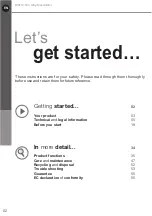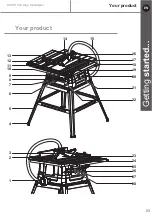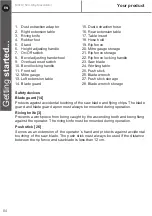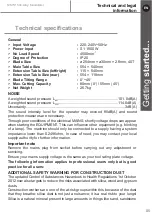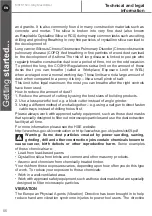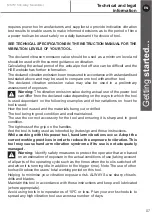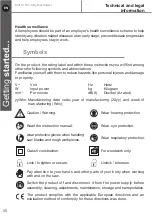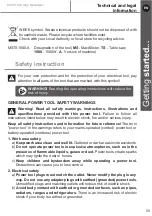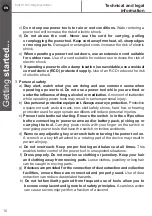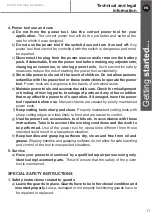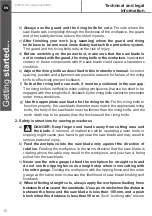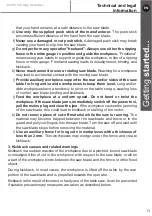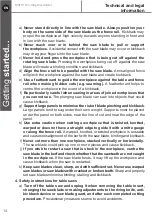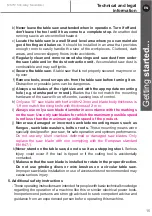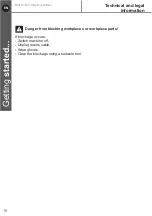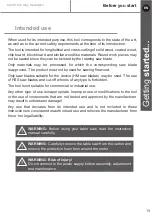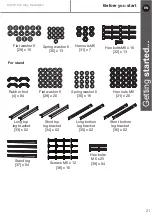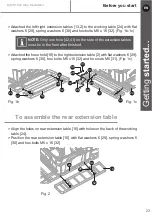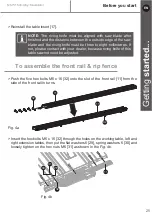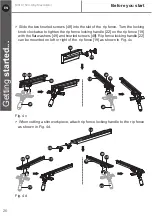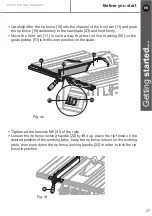
b)
Always use the guard and the riving knife for cuts.
For cuts where the
saw blade cuts completely through the thickness of the workpiece, the guard
and other safety devices reduce the risk of injuries.
c)
After finishing your work (e.g. seaming) where the guard and riving
knife have to be removed, immediately reattach the protective system.
The guard and the riving knife reduce the risk of injury.
d)
Before switching on the power tool, make sure that the saw blade is
not in contact with the guard, the riving knife or the workpiece.
Inadvertent
contact of these components with the saw blade could cause a hazardous
condition.
e)
Adjust the riving knife as described in this instruction manual.
Incorrect
spacing, position and alignment are possible reasons for failure of the riving
knife to effectively prevent kickback.
f)
So that the riving knife can work, it must be positioned in the saw gap.
The riving knife is ineffective when cutting workpieces that are too short to be
engaged with the riving knife. A kickback by the riving knife cannot be prevented
under these conditions.
g)
Use the appropriate saw blade for the riving knife.
For the riving knife to
function properly, the saw blade diameter must match the appropriate riving
knife, the body of the saw blade must be thinner than the riving knife, and the
tooth width has to be greater than the thickness of the riving knife.
2. Safety instructions for sawing procedures
a)
DANGER: Keep fingers and hands away from cutting area and
the blade.
A moment of inattention while operating power tools or
slipping might cause your hand to get near the saw blade and may result in
serious personal injury.
b)
Feed the workpiece into the saw blade only against the direction of
rotation.
Feeding the workpiece in the same direction that the saw blade is
rotating above the table may result in the workpiece, and your hand, being
pulled into the saw blade.
c)
Never use the mitre gauge to feed the workpiece for straight cuts and
do not use the ripping fence as a length stop when cross cutting with
the mitre gauge.
Guiding the workpiece with the ripping fence and the mitre
gauge at the same time increases the likelihood of saw blade binding and
kickback.
d)
When effecting straight cuts, always apply the workpiece feeding force
between the fence and the saw blade. Use a push stick when the distance
between the fence and the saw blade is less than 150 mm, and a push
block when this distance is less than 50 mm.
Such "working aids" ensure
Technical and legal
information
MSTS1500-A
by
MacAllister
12
Getting
started...
EN


